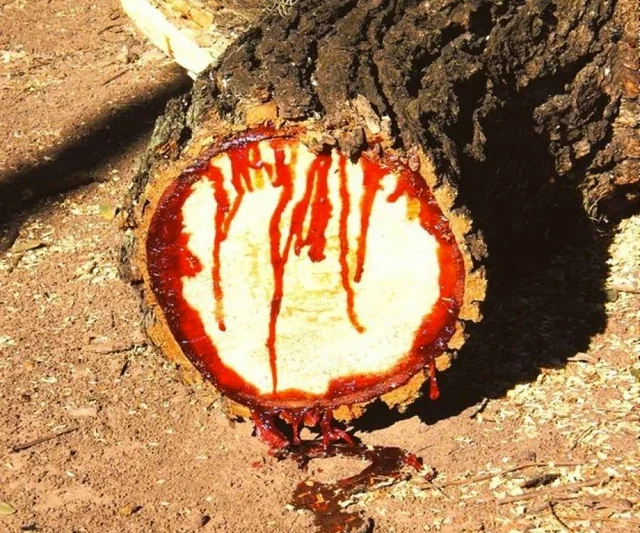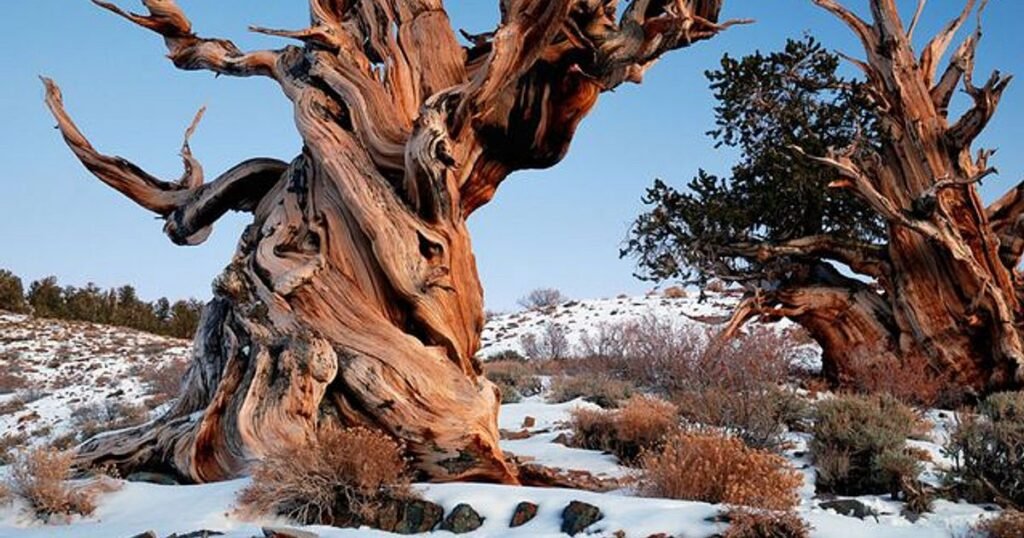Discover the 10 Trees That Look Like the Human Body. Explore these unique natural wonders and learn about the fascinating science behind these lifelike tree formations.
The natural world is filled with incredible wonders, from towering mountains to delicate wildflowers. But among the most captivating natural phenomena are trees that exhibit an uncanny resemblance to the Human Body. These lifelike tree formations, often referred to as “human trees,” are not just visually striking – they also offer insights into the remarkable adaptability and resilience of trees.
In this in-depth article, we’ll take a closer look at several types of trees that appear to mimic the human body, exploring the science behind their unique growth patterns and the cultural significance they hold in various regions.
1. Banyan Tree (Ficus Benghalensis)

- USDA Growing Zones: 10-11
- Sun Exposure: Full sun
- Soil Needs: Well-drained, nutrient-rich soil
The banyan tree, native to the Indian subcontinent, is perhaps one of the most well-known examples of a tree that resembles the human body. These massive, sprawling trees are characterized by their extensive aerial root systems, which can grow down from the branches and develop into additional trunks, creating a vast, interconnected network that can span hundreds of feet in diameter.
The way these roots grow and intertwine gives the banyan tree the appearance of a body with multiple legs or limbs, earning it the nickname “the strangler fig” in some regions. As the tree continues to grow and spread, its trunk-like roots can take on a distinctly humanoid shape, with knobby “knees” and “elbows” that seem to mimic the contours of the human form.
Banyan trees are revered in many cultures, often seen as symbols of strength, longevity, and spiritual significance. In Hindu and Buddhist traditions, these trees are believed to be the manifestation of the divine, and they are frequently found in temples and sacred spaces. The banyan’s ability to adapt and thrive, even in challenging environments, has also made it a powerful metaphor for resilience and growth.
2. Mangrove Trees (Rhizophora Spp.)

- USDA Growing Zones: 8-11
- Sun Exposure: Full sun
- Soil Needs: Saline, nutrient-rich soil
Mangrove trees, found in coastal regions around the world, are another fascinating example of trees that exhibit a distinctly human-like appearance. These salt-tolerant plants are known for their intricate, above-ground root systems, which can grow up from the water and become almost human-like in their form.
The roots of mangrove trees, called “prop roots,” resemble a network of legs or tentacles, often twisting and intertwining to create a truly unique and lifelike visual effect. As the trees grow taller, their trunks can take on a contorted, almost anthropomorphic shape, with knobby protrusions and gnarled textures that seem to mimic the appearance of human limbs or joints.
Mangrove forests are not only visually striking, but they also play a crucial role in coastal ecosystems, providing habitat for a diverse array of marine life and serving as natural barriers against storms and erosion. The haunting, otherworldly appearance of these “walking trees” has made them a subject of fascination for artists, writers, and nature enthusiasts alike.
3. Baobab Tree (Adansonia Spp.)

- USDA Growing Zones: 10-11
- Sun Exposure: Full sun
- Soil Needs: Well-drained, nutrient-poor soil
Native to Africa, the baobab tree is another remarkable example of a tree with a human-like appearance. These massive, bottle-shaped trees can grow up to 80 feet tall and have thick, swollen trunks that resemble human torsos or legs.
The baobab’s unique growth pattern, which involves storing water in its trunk to survive periods of drought, gives it a distinctly bulbous, almost anthropomorphic shape. Some varieties of baobab even develop hollowed-out interiors, which can be used as shelters or storage spaces by local communities, further enhancing their resemblance to human structures.
Beyond their striking visual appeal, baobab trees hold deep cultural and spiritual significance in many African societies. These “trees of life” are revered for their ability to provide food, water and shelter, and they are often associated with wisdom, longevity, and the interconnectedness of all living things.
4. Twisted Juniper (Juniperus Procumbens)

- USDA Growing Zones: 4-9
- Sun Exposure: Full sun to partial shade
- Soil Needs: Well-drained, acidic soil
The twisted juniper, a low-growing evergreen native to Japan, is another captivating example of a tree that appears to mimic the human form. These gnarled, twisted specimens can develop contorted, almost humanoid shapes as they grow, with knobby branches that seem to resemble legs, arms, or even faces.
The twisted juniper’s unique growth pattern is often attributed to its ability to adapt to harsh, wind-swept environments, where it must contort and twist its branches to survive. This adaptive response results in the tree’s distinctive, almost humanlike silhouette, which has captured the imagination of artists, gardeners, and nature enthusiasts around the world.
In Japan, these twisted junipers are highly prized and often cultivated in traditional gardens, where their unusual forms are celebrated as examples of the beauty and resilience of nature. These trees are also sometimes used in bonsai cultivation, where their miniature, human-like appearance is further emphasized through careful pruning and training.
5. Gnarly Oak (Quercus Spp.)
- USDA Growing Zones: 3-9
- Sun Exposure: Full sun to partial shade
- Soil Needs: Well-drained, acidic soil
The oak tree is a classic symbol of strength and longevity, but certain varieties, particularly the gnarly or twisted oak, can also exhibit a remarkable resemblance to the human form. These ancient, gnarled oaks often develop twisted, contorted trunks and branches that can take on almost anthropomorphic shapes, with knobby protrusions and sinuous, root-like extensions that suggest the presence of arms, legs, or even faces.
The gnarly oak’s distinctive appearance is the result of its ability to adapt to challenging environmental conditions, such as high winds, drought, or poor soil. As the tree grows, it must contort and twist its limbs to maintain stability and access resources, leading to the development of its unique, human-like silhouette.
These twisted oaks are revered in many cultures for their strength, resilience, and longevity, and they are often associated with themes of wisdom, endurance, and the cyclical nature of life. In some regions, they are even believed to be the dwelling places of spirits or supernatural entities, further adding to their mystique and cultural significance.
6. Dragon’s Blood Tree (Dracaena Cinnabari)

- USDA Growing Zones: 10-11
- Sun Exposure: Full sun
- Soil Needs: Well-drained, rocky soil
The dragon’s blood tree, native to the Socotra archipelago off the coast of Yemen, is a truly unique and captivating example of a tree that resembles the human form. These remarkable trees are characterized by their thick, twisted trunks and sprawling, umbrella-like canopies, which can give them the appearance of a human figure with outstretched arms.
The dragon’s blood tree’s distinctive shape is the result of its adaptation to the arid, high-altitude environment of its native habitat. As the tree grows, it must allocate its resources carefully to conserve water and withstand the harsh winds and intense sunlight, leading to the development of its unique, almost anthropomorphic silhouette.
Beyond their visual appeal, dragon’s blood trees are also prized for their sap, which has been used for centuries in traditional medicine and as a natural dye. This “dragon’s blood” sap, which flows from the tree’s wounds, has a deep, reddish-orange hue that has further fueled the tree’s mythical and symbolic associations with fire, blood, and the supernatural.
7. Bristlecone Pine (Pinus Longaeva)

by Summer Price, Trees Atlanta Intern
- USDA Growing Zones: 4-7
- Sun Exposure: Full sun
- Soil Needs: Well-drained, rocky soil
The bristlecone pine, found in the high-altitude mountain ranges of the western United States, is another tree that can develop a remarkably human-like appearance. These ancient, gnarled trees are among the oldest living organisms on Earth, with some individuals dating back thousands of years.
As the bristlecone pine ages, it often develops a twisted, contorted trunk and branches that can take on the appearance of a hunched, elderly human figure. The tree’s rugged, weathered bark and sparse, twisted foliage further enhance this resemblance, creating the impression of a weathered, time-worn individual.
The bristlecone pine’s incredible longevity and ability to thrive in the harshest of environments have made it a symbol of resilience, perseverance, and the enduring power of nature. These trees are revered by many Indigenous cultures and are also the subject of fascination for scientists, nature enthusiasts, and those drawn to the mysteries and wonders of the natural world.
8. Olive Tree (Olea Europaea)

- USDA Growing Zones: 8-10
- Sun Exposure: Full sun
- Soil Needs: Well-drained, rocky soil
The olive tree, a staple of Mediterranean landscapes, is another type of tree that can exhibit a striking resemblance to the human form. As these trees age, their trunks often develop a twisted, gnarled appearance, with knobby protrusions and sinuous, root-like extensions that can suggest the presence of limbs or a torso.
The olive tree’s unique growth pattern is largely a response to the harsh, arid environments in which it thrives. To withstand drought, strong winds, and poor soil conditions, the tree must allocate its resources carefully, leading to the development of its distinctive, often human-like silhouette.
Beyond their visual appeal, olive trees hold deep cultural and symbolic significance in many Mediterranean cultures. These trees are revered for their ability to provide food, oil, and shade, and they are often associated with themes of peace, wisdom, and the enduring strength of nature.
9. Live Oak (Quercus Virginiana)

- USDA Growing Zones: 8-10
- Sun Exposure: Full sun to partial shade
- Soil Needs: Well-drained, acidic soil
The live oak, a majestic evergreen tree native to the southeastern United States, is another example of a tree that can exhibit a human-like appearance. These towering, wide-spreading oaks are known for their massive, gnarled trunks and sprawling, twisted branches, which can sometimes take on the appearance of human limbs or torsos.
As live oaks age, their trunks often develop deep grooves and protrusions that can resemble the contours of the human body. And the tree’s low-hanging, outstretched branches can create the impression of a figure reaching out or embracing its surroundings.
The live oak’s human-like features, combined with its long lifespan and towering presence, have made it a symbol of strength, endurance and the enduring power of nature in many Southern cultures. These trees are often revered for their ability to provide shade, shelter and a sense of connection to the natural world.
10. Kapok Tree (Ceiba Pentandra)

- USDA Growing Zones: 10-11
- Sun Exposure: Full sun
- Soil Needs: Well-drained, nutrient-rich soil
The kapok tree, native to tropical regions of the Americas, Africa, and Asia, is another remarkable example of a tree that can exhibit a distinctly human-like appearance. These towering, buttress-rooted trees are characterized by their thick, swollen trunks and sprawling, almost tentacle-like roots, which can create the impression of a figure rooted to the ground.
As the kapok tree grows, its trunk can develop deep grooves and protrusions that resemble the contours of the human body, with knobby “elbows” and “knees” that seem to mimic the shape of limbs or joints. The tree’s massive, spreading branches can also take on an almost anthropomorphic appearance, creating the illusion of outstretched arms or a protective, embracing figure.
Beyond their visual appeal, kapok trees are also valued for their economic and ecological importance. Their lightweight, silky fibers have been used for centuries in the production of textiles, mattresses, and other products, while the trees themselves provide shade, shelter, and habitat for a wide range of wildlife.
These are just a few examples of the many trees around the world that exhibit a remarkable resemblance to the human form. From the sprawling, tentacle-like roots of the mangrove to the twisted, gnarled trunks of the bristlecone pine, these natural wonders offer a unique and captivating glimpse into the remarkable adaptability and resilience of trees.

Pingback: 10 Trees That Look Like the Human Body | Garden...